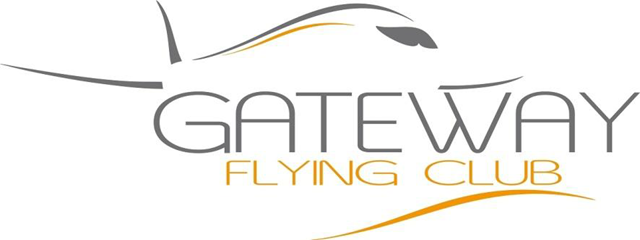 If you attended the AOPA Fly-In on August 22 in Anoka, Minnesota and wandered through the exhibitors and vendors you may have met representatives from the Gateway Flying Club, one of many clubs that attended the event. The club is based at Anoka County Blaine Airport (KANE) and had its 182 on display.
If you attended the AOPA Fly-In on August 22 in Anoka, Minnesota and wandered through the exhibitors and vendors you may have met representatives from the Gateway Flying Club, one of many clubs that attended the event. The club is based at Anoka County Blaine Airport (KANE) and had its 182 on display.
Gateway was founded in 1976 and has a fleet that includes a Cessna 172, a Cessna 177 Cardinal, and a Cessna 182 – all built in 1976. If you met Club President Chris Baye he may have told you:
“The mission of the club is to provide affordable and nicely appointed cross-country aircraft. We don’t have glass, they’re six-packs with good GPS’s. Our pilots like to fly for the most part in a 200 to 300 mile radius. We have guys who take the planes up to Canada or down to the Gulf Coast. Our planes get around. We’re very much a cross-country flyers type of club.”
Board Member-at-Large Curt Stoltz might have pointed out, “At the same time our 172 stays busy with students flying.”
There’s nothing too unusual about that. But if you started to ask some questions about finances, you were sure to quickly learn Gateway is not like most other clubs.
Its hourly rates are Tach time, dry. And new members pay lower monthly dues until the first quarter of the next year when the club resets rates. (It should be noted that dues have remained unchanged for the past few years.) And if that’s not enough incentive to join, the club is currently offering a special in which new members get the first $500 of flight time for free!
During the AOPA Fly-In, a number of people stopped by to learn about the club and not surprisingly, at least three people are seriously interested in joining.
New Member Discounts and Incentives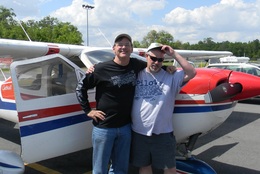
To become a member of the Gateway Flying Club members purchase a share for $2,350, which gives them access to all three aircraft. There are a total of 45 shares for the club, and currently there are about 35 members.
Shares are considered member’s property, so when a member wants to leave the club, they are free to sell their share for whatever they want. Often times, members will advertise their share on Craig’s List. If they don’t sell it on the open market, the club offers marketing assistance to the members, which generally means passing along a lead that may have otherwise been a club-held share sale.
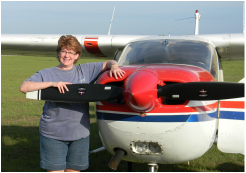
Dues are $140 per month. “As a kind of thank you for joining, a new member starts out at $125 a month, a $15 discount,” Chris said. “That lasts until the next dues reschedule and we reset in the first quarter of every year, although our dues have essentially held steady for the last three years.”
There’s a method to the incentive strategy. “We’ve had a lower price point on the shares. In the darker days after the financial downturn we had backed off on the asking price on shares to make it easier for folks to buy in and for people to sell,” Chris said. “We’ve been slowly ratcheting back up to something that more closely represents the value. At $2,350 you’re getting in at less than total club equity. It’s not a bad deal but we’re not in the business of liquidating and sending everybody cash.”
Curt explained, “The club took a substantial hit during the economic downturn. We had a number of members leave the club and forfeit their shares. It was devastating. Part of that experience is what drove us to use the dry Tach method of billing for aircraft.”
The Reason for Dry Rates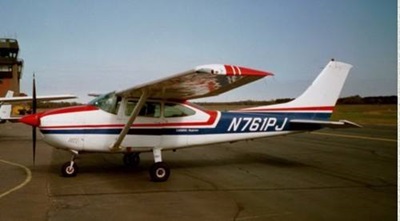
Some members who came under hard times and forfeited their shares not only had stopped paying dues, but also weren’t paying for their flight time. The hourly rates at the time had been wet. So essentially the club paid the fuel bill of these delinquent members.
“We had to write down a considerable amount of debt and we’ve worked very hard over the past five years to rebuild reserves,” Curt said. “Part of using the dry Tach method is a way of diversifying our risk. If the pilot is buying their fuel, the club isn’t holding that paper per se.”
Gateway now charges a dry rate of $45 an hour for the 172, $55 for the Cardinal, and $65 for the 182. Fuel at Anoka is currently $4.79 self serve, and even less at some other local airports. Chris and Curt didn’t know what the wet rates had been because the dry rates were already in place by the time they joined the club about five years ago.
The aircraft are equipped with JPI engine monitoring instruments that have a feature called lean finder. That allows the pilot to fly lean of peak and more accurately manage fuel flow. “It really is in the pilots hands to fly the aircraft correctly and you can save yourself quite a bit of money on a cross country trip,” Chris said.
The change to dry rates has paid off. At the September monthly meeting, the Treasurer, who happens to be a professional banker, said the club probably is in the best financial shape now than at anytime since he’s been in the club, which is 13 years.
Gateway now has a dedicated engine overhaul fund. About every three years one of the three aircraft is having an engine overhaul. “Now that we have that money in reserve we’ll be in much better shape to take care of that,” Chris said.
Associate Members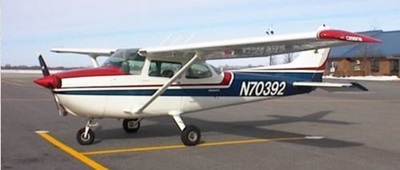
Another recruitment tool is having associate members – “a flying member of the same family as the primary shareholder,” Chris said. They don’t have to buy another share, and they are part of the primary shareholders account.
Associate members pay $40 a month in dues, but must pay the first three months up front, and then pay month to month after that. “The reason we do that is the Metropolitan Airports Commission wants to make sure that we’re not competing with flying schools and FBOs for their students,” Chris said. Getting three months dues up front discourages people from joining for a month just to go flying once or twice. The $40 basically covers the additional cost of insurance for another pilot.
“They share the same account as the primary account holder so they can’t have three pilots in the family and book the whole fleet and run off and do their own private fly-in,” Chris said. It has been used “to great effect to help a young person get their pilot’s certificate. We’re hoping to use it to do more pinch hitter training for spouses who are flying with the member. We’re very excited that the program is starting to gain some traction.”
Curt was impressed with the pinch hitter seminar that was given as part of AOPA’s Anoka Fly-In. “The gentleman who gave the seminar is going to bring the pinch hitter course back at the end of the year, which I think is an outstanding, outstanding thing. We’re going to try to set something up with the EAA chapter on the airport and several other clubs.”
The AOPA Fly-In at Anoka gave the Gateway Flying Club an opportunity to gain exposure with people who are interested in participating in aviation and showcase how its club’s financial structure is different, yet successful.
“From a club membership perspective it was the right venue,” Chris said. “AOPA really did a brilliant job of putting the clubs and the Rusty Flyers together, putting pilots together with opportunities to fly. It was a good mix. It was very successful for us.”
Factsheet
|
Name |
Gateway Flying Club |
|
Location |
Anoka County Blaine Airport (KANE), Anoka, MN |
|
Website |
|
|
Year formed |
1976 |
|
Aircraft |
1976 Cessna 172M Skyhawk ($45/hr) 1976 Cessna 177B Cardinal ($55/hr) 1976 Cessna 182P Skylane ($65/hr) Rates are Tach time, dry. |
|
Joining fee |
$2,350 per share (total 45 shares) |
|
Monthly dues |
$140 per month $125 per month for new members until dues are reset in 1st Quarter of new year $40 per month for associate members (family members), must pay first 3 months in advance |
|
Membership |
35 (maximum 45 shares) |
|
Scheduler |
Aircraftclubs.com |